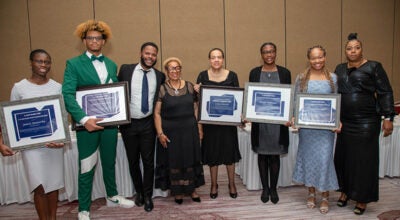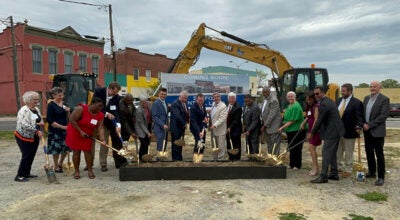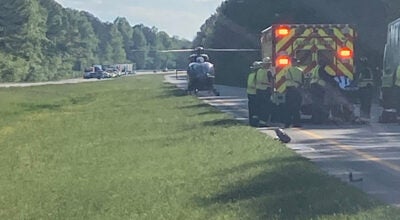Enrollment challenge at PDCCC
Published 9:20 pm Saturday, April 25, 2015
Paul D. Camp Community College officials have introduced several measures to halt it, but declining enrollment remains a stiff challenge for the new interim president.
In just three years, enrollment plummeted 25 percent from its highest level in at least 22 years to its lowest, the State Council of Higher Education for Virginia reports.
Fixing sagging student numbers emerged as one of several major challenges when new leadership at the college was announced last month.
The Virginia Community College System has appointed Dr. William C. Aiken as interim president. Sources say Dr. Paul Conco, after leading the college for five years, has been reassigned until his planned June 30 retirement.
The college’s 1,661 students in fall 2011 was the largest enrollment since 1992 — as far back as the council reports. It mirrored a spike statewide, the SCHEV data shows.
Last year, 1,259 students represented the lowest fall headcount the college had experienced in at least 22 years.
“We had not before, and have not since, had as large a graduating class as that particular academic year,” spokeswoman Wendy Harrison stated of 2011. “It is fair to state that we have experienced enrollment declines” since.
Why? Harrison cited the improving economy, which has sent folks back to work instead of community college to retool resumes, as well as “demographic factors and barriers for those living in rural areas.”
“Competition from other educational institutions — and not just other community colleges,” is also to blame, according to Harrison.
She also cites Paul D. Camp’s proximity to other, larger institutions. Speaking to that, the 14-percent decline in enrollment since 2011 at Tidewater Community College — as close as half an hour away from the community PDCCC serves — is 10 percentage points better than at PDCCC.
According to Harrison, the entire Virginia community college system has experienced declining enrollment. That’s true, but the 7-percent statewide decline since 2011 is 13 percentage points better than at PDCCC.
And since 1992, enrollment has declined 11 percent at Paul D. Camp but grown 38 percent for the state’s community college system.
Catherine Finnegan, assistant vice chancellor for institutional effectiveness at VCCS, said high school graduation numbers impact community college enrollment anywhere one looks.
“While we serve a larger percentage of non-traditional students than four-year colleges, the vast majority of our students are young,” she said.
Generally, according to Finnegan, 20 to 25 percent of high school graduates choose a two-year degree, which often is at a community college.
The SCHEV data shows that while the statewide community college headcount had been climbing gradually, it really began gathering steam when the recession arrived in 2008.
Finnegan said the tough economy made community college an attractive option. Wanting to save money, parents increasingly steered their high school graduates, which had become more plentiful, toward places like PDCCC instead of four-year degrees.
But after 2008 saw the second-highest fall enrollment at Paul D. Camp in at least 22 years, it dipped again in 2009.
After International Paper closed the Franklin paper mill in the spring of 2010, putting about 1,100 people out of work, enrollment then climbed again for two consecutive years.
PDCCC is one of Virginia’s smallest community colleges, noted Jeffrey Kraus, VCCS’ vice chancellor for public relations.
“I think it’s about No. 3” smallest, he said. “I think we are finding — especially since the turn of the 21st century — there are some headwinds for our small colleges.”
In an age when anyone with Internet access can study online, at any one of hundreds of colleges anywhere in the country and even overseas, smaller community colleges are finding it harder to keep up in the technology arms race, according to Kraus.
They’re also finding it harder to offer the precise degree a prospective student may be seeking. “People might want something else,” Kraus said.
TCC is Virginia’s second-largest community college, and Kraus said he thinks its proximity could be a factor in Paul D. Camp’s decline.
“It’s incumbent upon us to make sure we are serving people the way they need to be served,” Kraus said.
“Our job is to help people get post-secondary qualifications. No one is going to erect a gate at the county line,” Kraus said, to stop folks living in Franklin, Suffolk or Smithfield from attending TCC in Chesapeake, Norfolk, Portsmouth or Virginia Beach, instead of their native Paul. D. Camp.
To improve enrollment, according to Harrison, Paul D. Camp has:
4Hired a dual enrollment coordinator. (Dual-enrolled high school students are about 25 percent of the headcount, Harrison says.)
4Hired high school, career, adult success and job placement coaches.
4Introduced “special programs, such as our student support services effort, to better engage ‘at risk’/high need students.”
4Increased marketing in local newspapers and other media outlets two-fold since 2012.
4Launched new programs, such as electrical technology and robotics/mechatronics.
The college is currently hiring a recruiter and assessing each academic program it offers. “For those (programs) which are strong, we’ll invest more in to work to attract more students and avoid waiting lists,” Harrison stated.
The college is also establishing an “everybody is a recruiter” philosophy, Harrison added, and Aiken has asked employees to consider mentoring at least two to three students.
“They would assist in their ongoing engagement at PDCCC, which would not stop after they enroll, and the mentoring would continue throughout their experience with PDCCC,” according to Harrison.
Harrison says a “marketing enrollment management team,” made up of all vice presidents, deans, high school career coaches, career development center representatives, marketing/advancement representatives and student liaison, meets every two weeks for “brainstorming, recommending execution and assessing activities in a near real-time environment.”
“One chief activity,” she added, is fall 2015 marketing and mailing class schedules to “target student markets.”
When Conco stood before Suffolk School Board members in March to deliver his State of the College report, observers may have noticed a resignation in his body language and voice at odds with the smiling faces and upbeat statistics in the PowerPoint slides.
Now his interim replacement is dealing with the real state of the college.
As Harrison put it, “The president is ultimately responsible for enrollment.”






